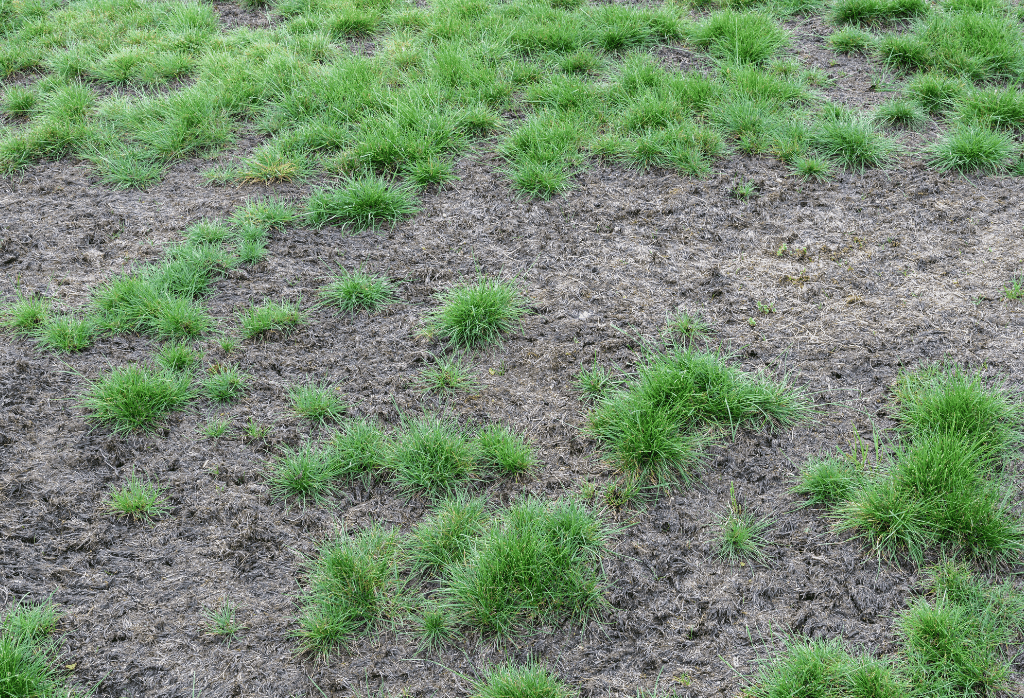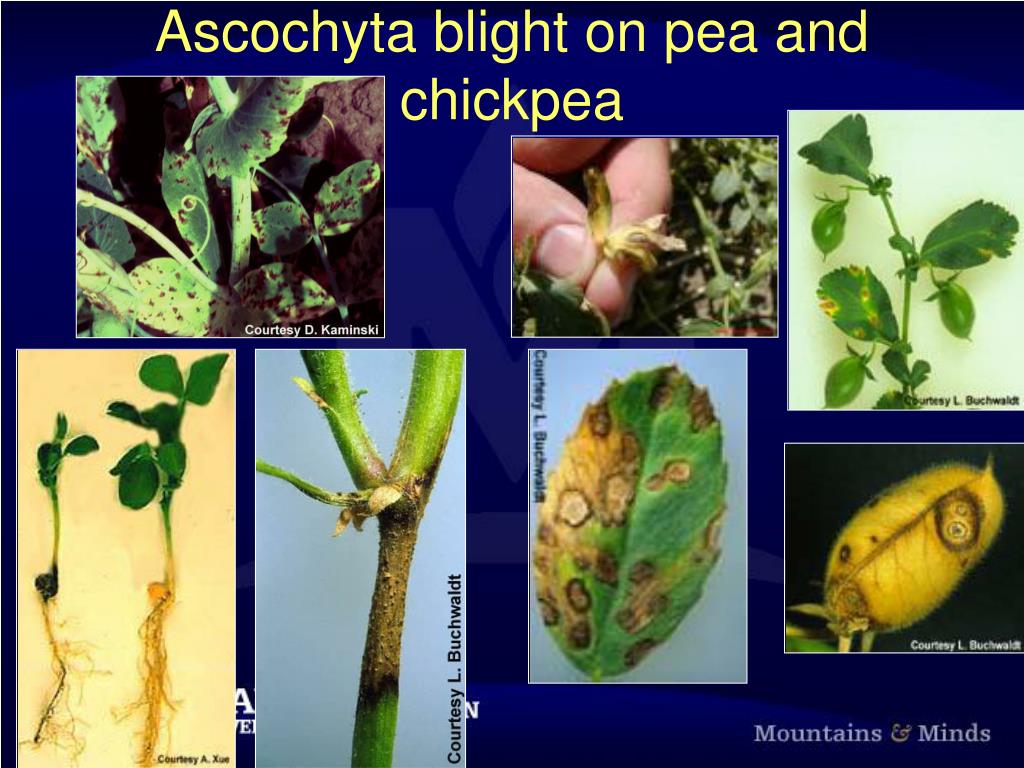
Patches of wilted, pruned, and dying plants develop within the crop these patches appear as premature haying off. Initial symptoms are commonly the wilting of individual or small groups of seedlings. Seeds can become infected after lesions develop on pods. Circular 'hot spots' or 'foci' consisting of plants with severe infection can appear in crops but by this stage considerable damage has occurred. Lesions often girdle the stems of the plant, causing them to weaken and subsequently break off, making later detection difficult. Spores ooze out of pycnidia and are spread by rain-splash upwards within the plant and sideways to nearby healthy plants. Toward the centre of the lesion, small, black fruiting bodies called pycnidia develop in 7–10 days, often in concentric rings (see image). Symptoms become visible in 4–5 days as a pale green/yellow discolouration on leaves, often referred to as ‘ghosting’ (see image). Phoma rabiei infects the leaves, stems and pods of chickpea plants, causing tan/brown, rounded lesions on affected plant parts. Pod lesions are similar in appearance to leaf lesion. Stem lesions can cause girdling and breakage. Pycnidia are also present in stem lesions. Lesions on stems at first tend to be oval shaped, with brown centres and a darker margin.

Pycnidia produce spores, which infect other plants through wind-borne stubble and/or water (rain-splash).Īscochyta leaf ghosting symptoms may appear 4–7 days after rainfall or heavy dew. These pycnidia or fruiting bodies are unique to ascochyta blight.

Note the concentric circles of brown–black dots in the centre of the lesions. Lesions usually begin as a pale green-yellow discolouration on leaves and stems and progress into small round lesions with dark-brown margins and pale grey to tan sunken centres. Plants appear as if premature haying off has occurred. Usually the initial symptoms are the wilting of individual or small groups of seedlings. There are no other known hosts of Phoma rabiei in Australia. Subsequent in-crop infection and spread occurs when inoculum is moved higher in the canopy or to surrounding plants by wind or rain splash during wet weather. Spores of the fungus can survive for a short time on skin, clothing and machinery.

Initial crop infection is due to the introduction of either infected planting seed or from movement of infected trash by wind, machinery or animals. Inspections should be undertaken 10–14 days after rain events, when new infections will be clearly evident as lesions on plant parts. Management strategies are aimed at preventing the occurrence of disease and limiting its spread.Īscochyta blight is managed through crop rotation, hygiene, seed treatment, prophylactic fungicide application and growing varieties with improved resistance (Table 1).Īll growers and advisors need to inspect their crops regularly, from emergence through flowering right up to plant maturity. Unlike some insect control strategies, there is no economic threshold for ascochyta. Ascochyta blight is now considered to be endemic in all growing regions with the exception of central Queensland. The fungus can infect all above ground parts of the plant and is most prevalent when cool, cloudy and humid weather occurs during the crop season.Īscochyta blight first caused widespread damage to chickpeas in northern New South Wales and southern Queensland in 1998 when extremely wet conditions favoured disease development and spread. Kevin Moore 1, Mal Ryley 2, Gordon Cumming 3, Leigh Jenkins 1ġ NSW Department Primary Industries, 2 Queensland Department of Agriculture and Fisheries, 3 Pulse AustraliaĪscochyta blight, caused by the fungus Phoma rabiei (formerly Ascochyta rabiei ), is a serious disease of chickpeas in Australia. Australian Pulse Bulletin Chickpea: Ascochyta blight management


 0 kommentar(er)
0 kommentar(er)
